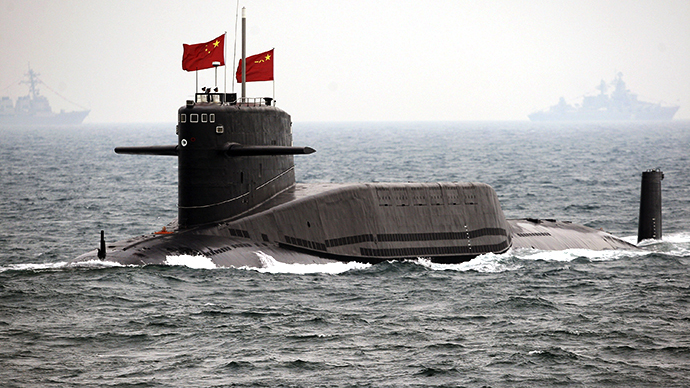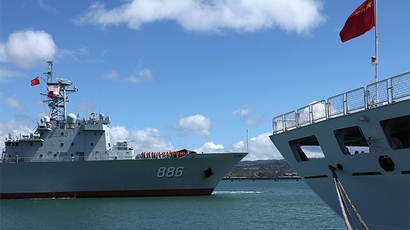Futuristic Chinese ‘supersonic’ sub could reach US shores in under two hours

Traveling from Shanghai to San Francisco in under two hours may sound like a fantasy, but China believes it’s figured out how to design an underwater vehicle that can make the idea a reality.
More worryingly, though, is the possibility that the technology will be used to develop even more dangerous weaponry.
According to the South China Morning Post (SCMP), the super-fast technology was developed by scientists at the Harbin Institute of Technology, and would allow underwater submarines or torpedoes to exceed the equivalent speed of sound under water – about 3,600 miles per hour.
The idea is based on the old Soviet concept of supercavitation, which involves creating a large air bubble around an object so that it could avoid facing too much friction and travel through water quickly.
Professor Li Fengchen said that when the vessel hits the water, one of its mechanisms continuously sprays a “special liquid membrane” all over the object’s surface. This membrane eventually wears off, but by the time the vessel reaches 46 miles per hour, it’s going fast enough to enter supercavitation state and generate an air bubble capable of helping it cover previously unknown distances.
"Our method is different from any other approach, such as vector propulsion," Li told SCMP. "By combining liquid-membrane technology with supercavitation, we can significantly reduce the launch challenges and make cruising control easier."
In theory, this means a trip across the Pacific Ocean would take only 100 minutes, while a transatlantic voyage could be undertaken in less than an hour.
Despite the claims of progress, Li added that there are still significant hurdles scientists have to overcome, such as creating precise steering controls and an engine strong enough to power the whole operation.
Many details surrounding the technology remain unknown, since the project is still categorized as a military secret. Supercavitation could still be used to create fast-moving torpedoes and other weapons, and the US, Russia, Germany, and Iran are all working on the same issue.
Still, Li said there could be ways to use the breakthrough to benefit more than just militaries. It could pave the way for fast underwater transportation, or help create swimsuits that allow for unprecedented mobility.
"If a swimsuit can create and hold many tiny bubbles in water,” he said, “it can significantly reduce the water drag; swimming in water could be as effortless as flying in the sky.”














